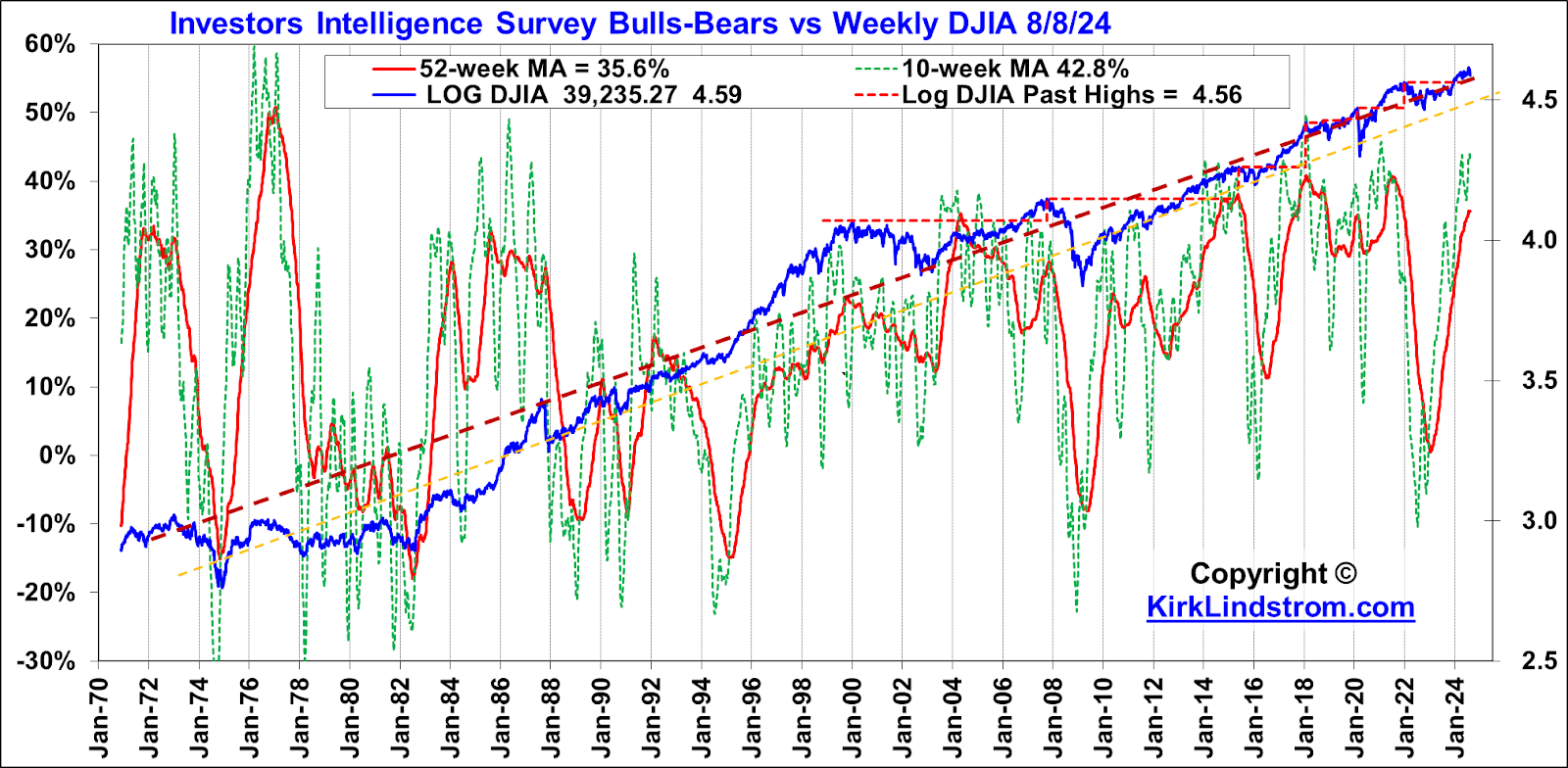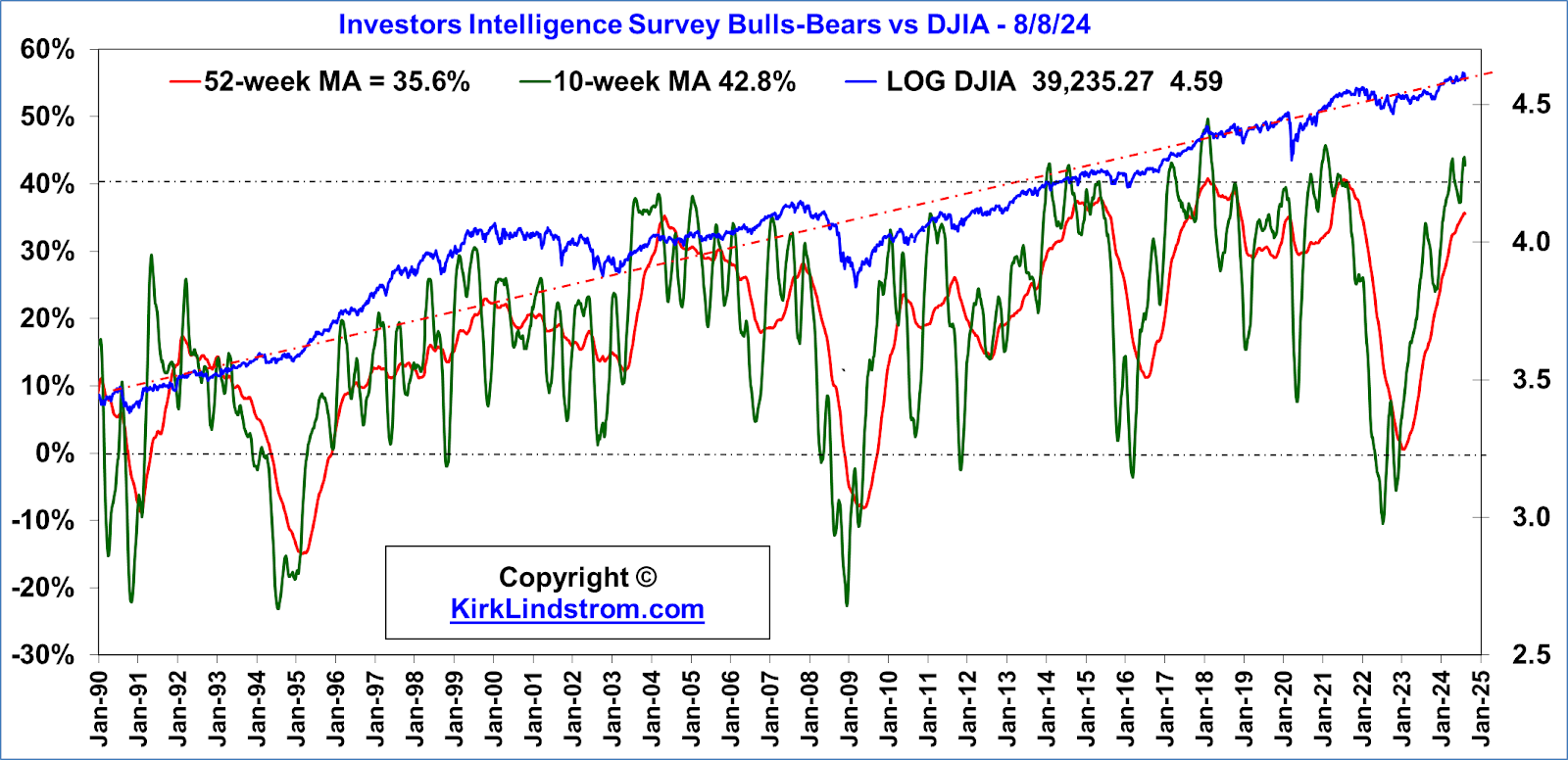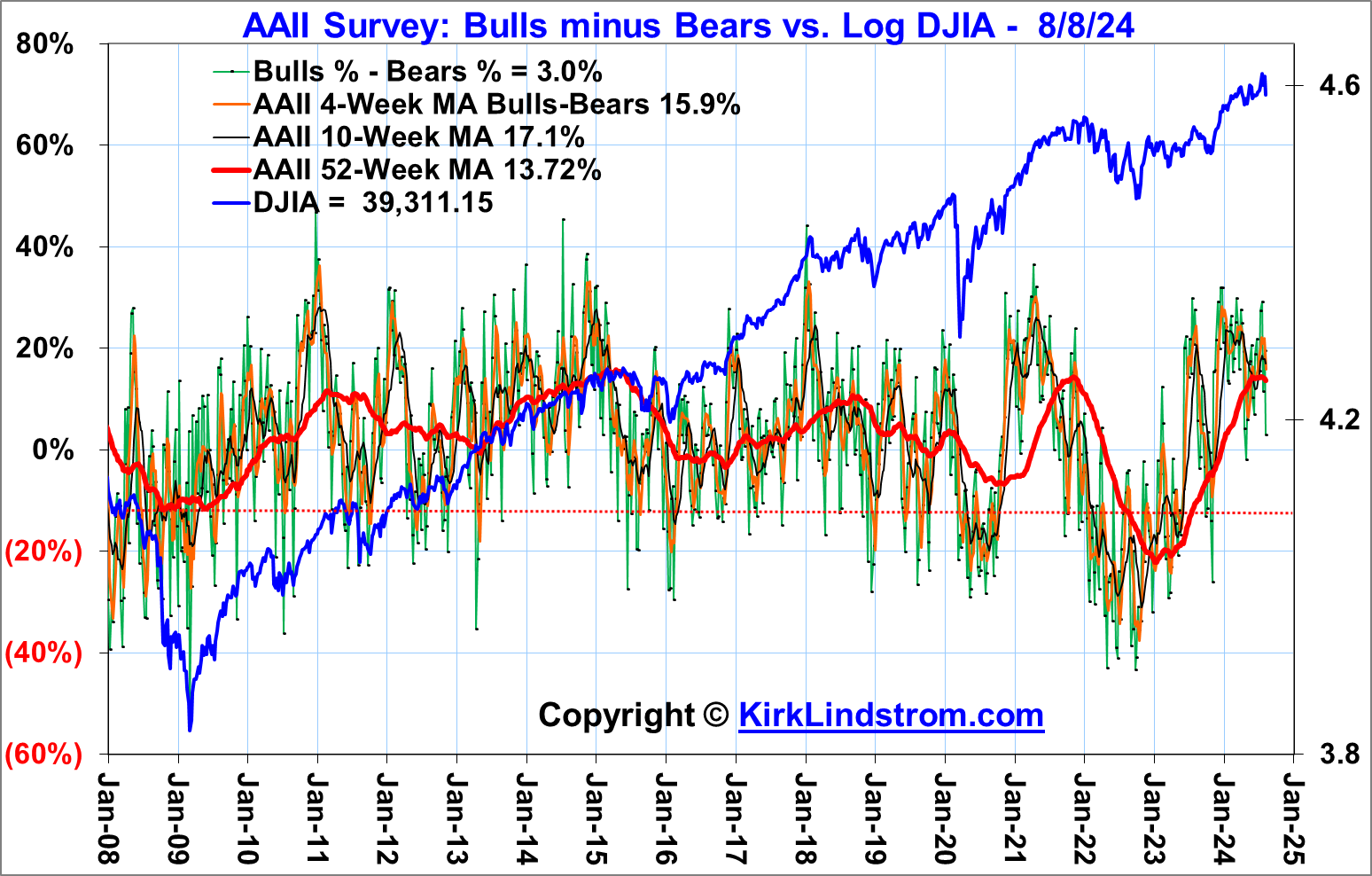Market Sentiment Update
Read Kirk Lindstrom's Investment Letter to see what these charts meant to me plus the full list of stocks and ETFs are in my "Explore Portfolio" with my price targets to both take profits or buy more shares, depending on market conditions, prices, sentiment and other factors.
Investors Intelligence Bulls / (Bulls+Bears) & S&P 500 Weekly - 8/8/24
- The NAAIM Exposure Index represents the average exposure to US Equity markets reported by our members.
- https://naaim.org/programs/naaim-exposure-index/
Invented by Tom Drake, the 2CS-p is the "5 day moving average of the product of the vix and p/c ratio." The scale runs from 0 to 100% with 0% max bullishness and 100% max bearish reading for us contrarians.To calculate 2C-p, Larbro explains: "Take each days p/c ratio and multiply it by that days vix. Take the sum of those results for that day and the previous 4 (5 total) and percentage rank them from 0% to 100% in terms of size against all the other data you have. The higher the numbers (5 day sum of p/c x vix), the higher the ranking. Then subtract that % ranking from 100% to "invert" the ranking so that lower 2c-p correspond to lows in the market and vice versa.In my case they are ranked from today all the way back to Feb 10, 2003, the earliest I have data for. So in a nutshell if yesterday's 2c-p was 7.8% (which it is) that tells you that only 7.8% of the sum of the 5 day p/c x vix (aka the 2c-p) is lower than yesterdays value."
These charts are covered on page 6 of my newsletter with updates during the year for what the different types of sentiment charts mean to me. This is an easy place to give my subscribers updates of charts too numerous to add each month, especially after significant changes.
- Page 6 is dedicated to a monthly update on sentiment.
- Page 12 summarizes sentiment and how it relates to five other "Market Factors" I follow to help set my asset allocation..
the August 2023 Issue for FREE!!!
This is not an “exact science” so “all or nothing” market timing is foolish.
Market Timing Disclaimer: No sentiment indicator, or any indicator for that matter, is 100% reliable. I look at sentiment as head winds and tail winds. When sentiment is terrible, then it acts like a tail wind for your returns where you could see further declines, but long term, it is best to be buying when most others are selling. Likewise, if we see sentiment get too bullish, then I would consider lowering my portfolio asset allocation. It seldom pays to be buying stocks when EVERYONE is talking about stocks and how much money they are making at cocktail parties.
In addition, I am not market timing but for a small portion of my Explore Portfolio. I use market-timing indicators to tell me it is a good time to buy so I can add to positions when the market is down and thus help me overcome my fear to rebalance back to my target asset allocation. Likewise, when the market-timing indicators are saying to sell, they usually come when the markets are high where I want to be taking profits. The market timing indicators at market highs help me get over my greed and take profits.






















No comments:
Post a Comment